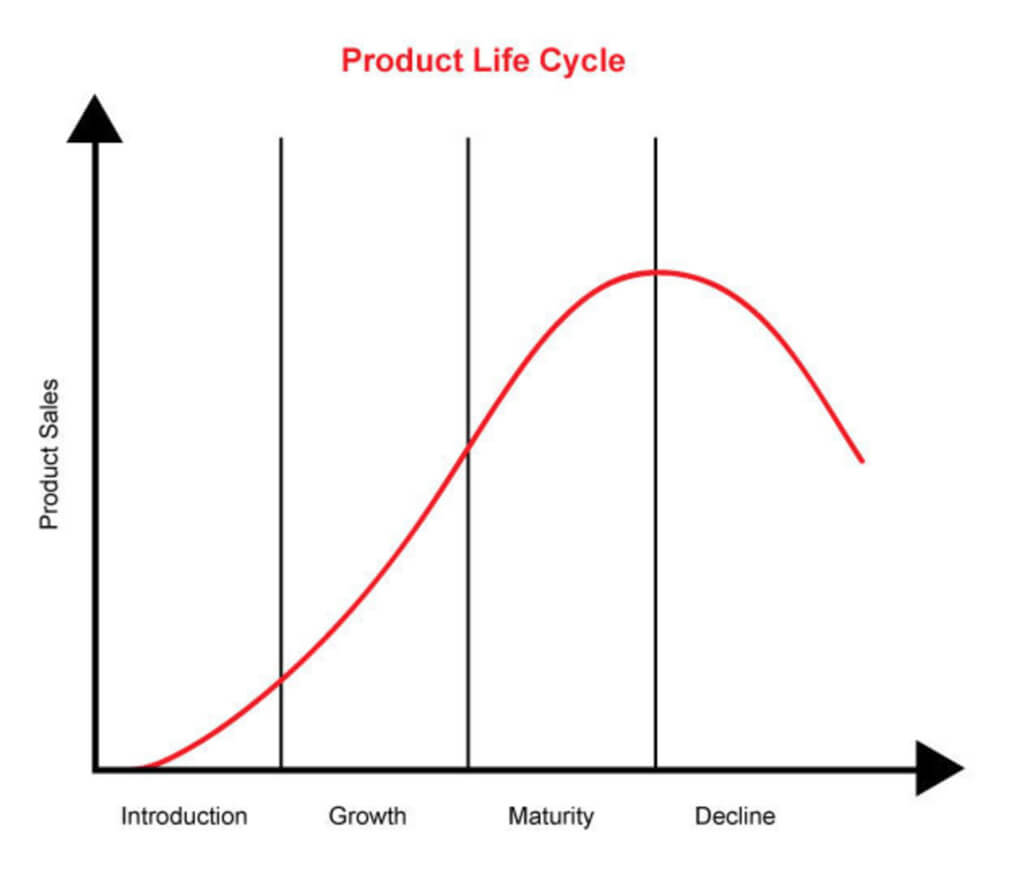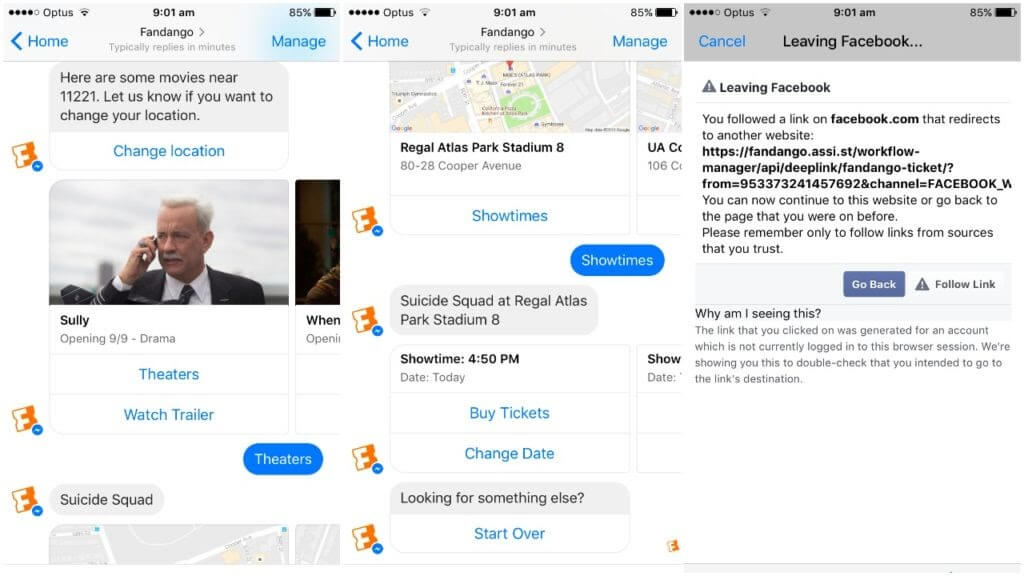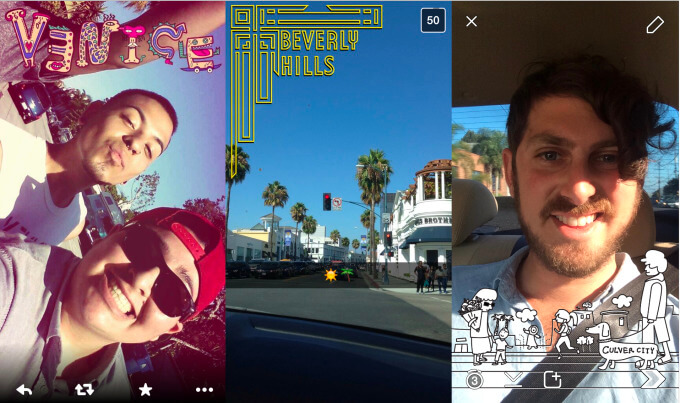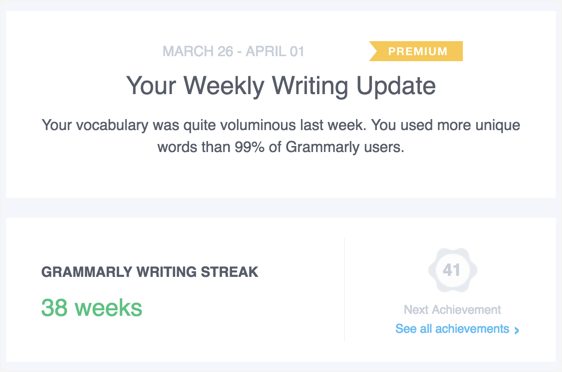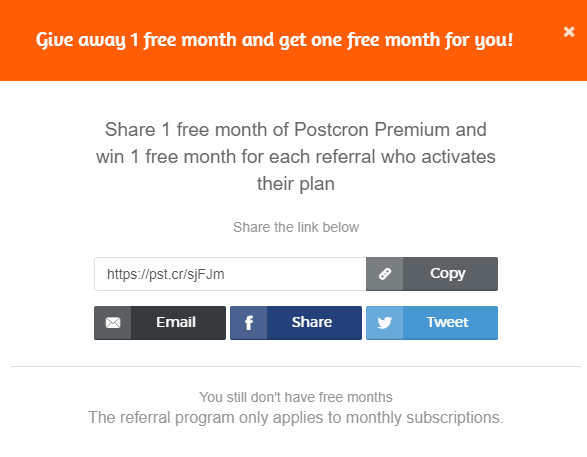Groove’s customer service platform almost died in the introductory stage because they forgot to listen to their customers. They drew people in with a product they assumed would be a hit and pushed forward without taking in customer feedback.
The result? People had a terrible experience using their product.
After turning their attention toward feedback and testing, letting the voice of their customers fuel their content strategy and product development, they took off. Three years later, they were a $5 million business.
Not revisiting your marketing objectives in the growth phase of your product lifecycle is the death knell of many startups.
In this article, you’ll learn how to develop a marketing strategy for the growth stage. We’ll also share how to achieve marketing goals at this stage, using your existing customers and experimentation to increase sales and loyalty.
Table of contents
What is the growth stage of the product life cycle (and why is it important)?
The growth stage is the period of the product life cycle with the sharpest increase in sales thanks to a boost in-market presence. It’s the second of the four product life cycle stages:
- Introduction stage;
- Growth stage;
- Maturity stage;
- Decline stage.
After getting your product to market and working to gain traction (with new insights but little in the way of financial reward), the growth stage accelerates your ascent. Your audience is aware of and has accepted your product.
Generating interest and capturing demand this way comes with several benefits.
- Increased consumer awareness: More people using and talking about your product helps to increase market size and demand, leading to a boost in sales;
- Lower costs: The large outlay of product development and marketing in the introduction stage can start to be clawed back through economies of scale, more efficient routes to market, and new distribution channels;
- Greater profits: The combination of more product sales and reduced costs can see an upturn in profits and margins on products sold.
Increased demand brings challengers looking to benefit from the developing market. It also means you have to contend with no longer being the “new” product and the hype boost that can bring.
For this reason, the growth stage is the best time to innovate: first by introducing new product features or product lines to diminish competitors attempting to copy, then by capitalizing on your standing to position your product as the best choice.
How to identify if you’re moving from the introduction stage to the growth stage
In the introduction phase, the focus is on creating product awareness to motivate your target market to consider you when making a buying decision.
The introductory stage is rarely profitable because of high distribution and promotion expenses but low sales.
You’re expending a lot of resources trying to build awareness and find a foothold in the market, so your customers continue purchasing and spreading the word.
This is why fads tend to rise and fall without ever making it out of the introductory phase: They’ve failed to satisfy a lasting need for their users.
Because you’re spending a lot without reaping financial rewards, keep the introduction stage as short as possible.
Your marketing goal in the introduction stage is to get out of the introduction stage.
When sales increase and your marketing objectives shift towards creating a preference for your brand over the competition, you’re heading toward the growth stage of product lifecycle marketing.
The role of marketing in the growth stage
You’ve achieved a degree of awareness, and people are buying your product. Now, you have to get creative, so you’re top of mind as the choice in the market continues to build.
As Harvard Business School professor, Theodore Levitt, notes:
“Instead of seeking ways of getting consumers to try the product, the originator now faces the more compelling problem of getting them to prefer [their] brand.”
Your market goals now are to increase market share and create brand preference.
Luckily, there are many ways to do this (as we’ll see below). To establish why your brand is better than the rest, champion your voice of customer.
Use the feedback you’ve gained in the introductory phase to position the messaging of your product. Your early customers will reveal the specific benefits of your product in a way that resonates with future buyers’ needs and challenges.
You can also use this phase to drive adoption and consumption post-sale. Once your customers are on board, you can reward their loyalty to create brand advocates that help grow sales through word-of-mouth.
Here’s how to do exactly that, with examples of businesses that get it right.
Develop a marketing strategy that champions the voice of the customer
To drive growth, build a company that connects with customers beyond surface-level attributes like price or features.
The more customers identify with your brand, the more they’ll hesitate to jump ship. They’re also more likely to return and promote your business.
Develop your growth marketing strategy with these concepts in mind.
Let customer and competitor research guide you
At launch, marketing is based on customer behavior related to the problem your product solves. In the growth phase, you have the advantage of early adopters and data to tailor marketing (and product development) strategies based on customer experiences.
Use quantitative research to glean standardized facts related to users’ experience with your website, brand, or product features.
Wise, for example, found that 67% of its customers join through recommendations. The better the experience, the more they recommend the product to others:

Wise then used Net Promoter Score (NPS) surveys to determine if users would recommend it to friends.
They found that the higher the NPS of a customer, the more recommendations they make.
Using the results of this quantitative research, Wise works on creating positive experiences to keep scores high:
“Our customers are at the heart of everything we do. We know that in order for every user to become an advocate for Wise, our product has to be worth talking about. We try to be 10x better and more exciting than the competition.” – Nilan Peiris, VP of Growth at Wise
The result? Wise (formerly TransferWise) has the strongest advocates in YouGov’s BrandIndex.
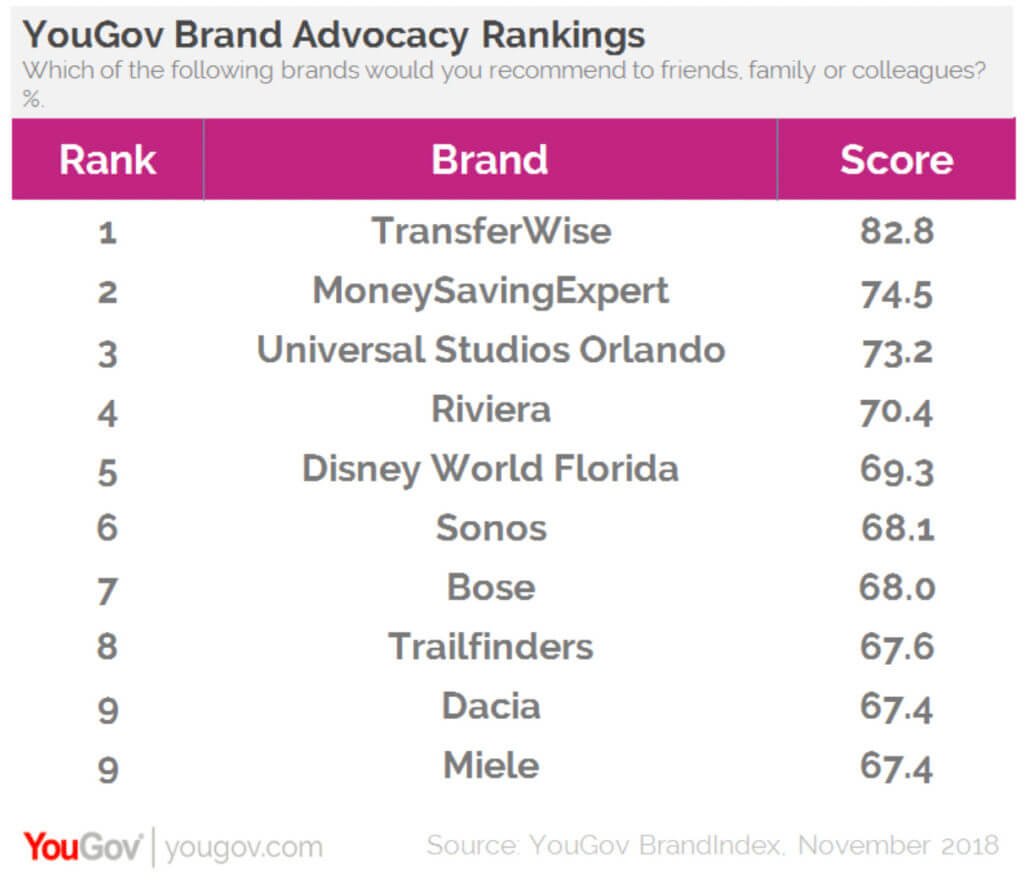
Combine quantitative research with qualitative research by:
- Conducting usability testing
- Reviewing live chat transcripts
- Interviewing customers one-on-one
- Running customer surveys
Qualitative research gives you the why behind the what. For example, if a user wouldn’t recommend you, ask them what specifically about your product, brand, or experience put them off. Then use this feedback to improve.
Use your findings to fine-tune customer personas and make data-driven UX decisions.
Seek user input on new features and updates to help you build a more user-centric product. It will also make customers feel valued and appreciated, both of which are key to winning loyalty.
How do your brand and product compare to the competition? Look outwards, carrying out a competitor analysis by:
- Setting goals;
- Identifying the competition;
- Conducting a competitive usability investigation;
- Comparing value propositions;
- Interviewing competitor customers;
- Running competitive design analysis;
- Making a quantitative competitive investigation;
- Running a functional investigation.
This deep dive will help you establish how your messaging stacks up against your rivals and which aspects of your brand and product will help you stand out.
Control the narrative with a compelling value proposition
Your value proposition is the promise of the value you deliver. It tells people why they should choose you.
An effective value proposition must be relevant to the problem or situation your target audience experiences, and it must be benefit-led. It should also act as a differentiation tool.
There are no set ingredients for a value proposition, but it should typically include the following.
- A headline: A catchy summary of your offer;
- A sub-headline and supporting copy: An explanation of your product and why people should use it;
- A hero shot: A product image or video that reinforces your message.
Take Hotjar’s homepage:
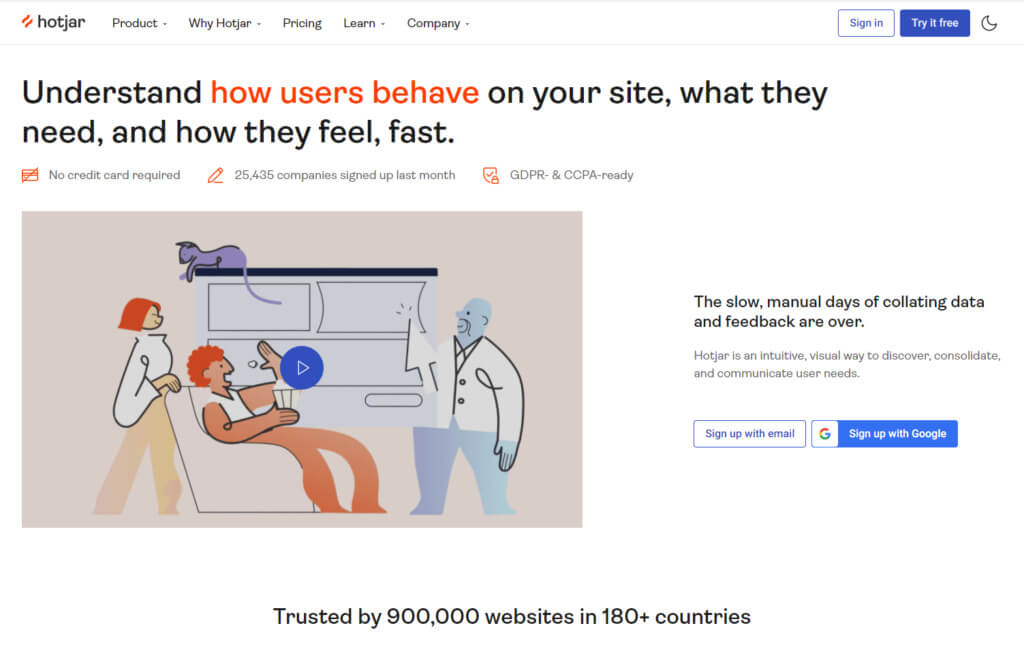
Its headline immediately communicates the value of the product:
“Understand how users behave on your site, what they need, and how they feel, fast.”
The supporting copy illustrates the problem Hotjar is solving:
“The slow, manual days of collating data and feedback are over.”
Followed by an explanation of what the product is:
“Hotjar is an intuitive, visual way to discover, consolidate, and communicate user needs.”
An introductory video reinforces the message. It uses the PAS formula to create an emotional connection:
- Problem. Identify the user’s biggest pain point.
- Agitate. Reinforce the issue and add emotion.
- Solve. Introduce the product as the solution.
Finally, Hotjar adds in some value proposition “boosters,” small value-adds that instill confidence in the reader:
- “No credit card required”;
- “25,435 companies signed up last month;
- “GDPR- & CCPA-ready”.
As a complete package, it ticks the boxes for a good value proposition:
- Easy to read and understand;
- Communicates real results;
- Provides assurances;
- Avoids hyperbole.
Creating a unique value proposition (UVP)
A compelling UVP is born out of brainstorming and experimentation. Come up with several options and stress test each of them.
Follow the steps conversion copywriter Momoko Price recommends in her product messaging course:
1. List your product’s key features;
2. Pinpoint those that are unique;
3. List customer pain points for each feature;
4. Define desirable outcomes for each pain;
5. Score pains or outcomes by severity and frequency;
6. Edit top-scored pain outcomes into UVPs; and
7. Score the UVPs (and go with the best ones).
Test your UVP using:
- A/B testing. Split-test the top candidates and measure sales conversions, lead counts, click-throughs, etc.
- Pay-per-click advertising. Split-test different ads targeted at the same customer. Measure click-through rate and landing page conversions.
Reward users with tailored marketing experiences to create brand advocates
Multiple case studies have shown that the fastest route to growth is through happy customers. For example:
- Slack grew from 8,000 to 500,000 daily users in a year thanks to word-of-mouth reviews from users of its freemium platform;
- Canva grew to 15 million users in seven years with a combination of great user experience and community building;
- Dropbox went from 100,000 users to over 4 million users in just over a year thanks to the creation of a referral program; and
- Xero increased paid subscriptions and reduced churn with a partner program.
Happy customers have an emotional connection to your brand, which results in a 306% higher lifetime value. They also recommend you at a much higher rate than satisfied customers (75% vs. 45%).
Create brand advocates by connecting with customers and rewarding loyalty using the following methods.
Stay close to your audience on social media
There are two ways to break down the barrier between customer and company on social media.
Customer service
When a user reaches out to you on social media, the majority expect a same-day response. Meeting that expectation has been shown to increase loyalty.
It also gives you a competitive advantage. Around 44% of consumers say social media customer service distinguishes a brand from its peers.
Set up social listening tools to monitor brand mentions and respond to customer questions and comments efficiently. If you’re active on several channels, consider merging comms into a single platform to maintain customer satisfaction with fast, consistent responses.
For example, Lemonade delivers timely, personalized interaction across Instagram:

Twitter:
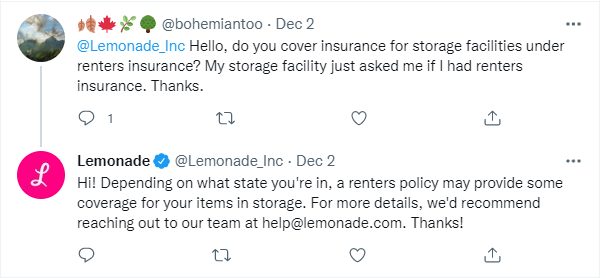
And Facebook:

This personal touch keeps satisfaction high among users. It also makes a good impression on followers yet to try the insurance company. By engaging on social media, followers will make the link that Lemonade cares about its users.
Where you’re unable to engage promptly in person, keep response rates high by using a chatbot to answer frequently asked questions and direct customers to appropriate support channels.
Fandango’s Facebook Messenger Bot helps people watch movie trailers and find local theaters:
Its bot tackles common queries, freeing up the social media team to deal with more complex or pressing issues.
Community building
You can build a social media community anywhere people interact online. It can take many forms:
Studies show that building a social media community can increase brand trust. It’s a great way to glean insights from your audience while making them feel valued.
Survey your customers to establish their interests and problems. Ask what types of content they like to consume and who they like to connect with.
Build your community around these like-minded people. Let persona-driven insights guide the content you produce.
Most importantly, actively participate.
Around 70% of customers feel more connected to brands with CEOs who are active on social media. And 72% feel the same when employees share brand information. Your team members are your earliest brand advocates; empower them to start and engage in conversations.
Personalize the customer experience
You don’t have to have Netflix’s personalization algorithm to show customers relevant content. There are plenty of ways to deliver a thoughtful, tailored experience.
For existing customers, use personalization to show that you know them. Leverage data to:
- Send tailored offers based on previous purchases;
- Remind them of their progress;
- Deliver customer-only discounts and sales promotions;
- Celebrate special occasions with them;
- Show them location-specific content.
Snapchat uses geofilters:
Starbucks pushes notification discounts (to users with this feature enabled):
Grammarly sends personalized reports that show how users improved their writing:
These companies use the data they hold to personalize the user experience. And with good reason.
Around 83% of consumers surveyed are willing to share their data to create a more personalized experience.
Additionally, more consumers are annoyed by a lack of personalization when engaging with a company. According to Accenture, 41% of consumers switched companies because of a lack of personalization and trust.
Reaching your customers with creatively tailored content is becoming an increasingly critical tactic to deploy.
There is a multitude of software options you can use to help you do this:
Once you’ve found the right tool, get started with personalization using this three-step process.
1. Choose your variables: These could be your top market segments and keywords, location, visitor frequency, etc. This will largely depend on what data you hold on your customers.
2. Configure rules and create segmented content: Enter your variables into your chosen personalization software and configure your rules. What will happen if a customer that meets your criteria takes the chosen action? (e.g., when a customer from the U.K. visits your website, ask them if they’d like to see prices in GBP)
3. Launch your personalized content: Run it for a period and analyze results based on performance. Continue optimizing your campaign until you’ve achieved the desired results.
Drive loyalty with incentives
Much like personalization, incentives are a way to show customers you care. While personalized content is based around customer satisfaction (i.e. creating positive sentiment), incentives are powerful motivators for repetition and brand advocacy.
Use incentives to optimize customer retention and advocacy through gamification.
Postcron encourages repeated actions by letting users earn and stack rewards:
Every time a customer refers a friend, they get a free month of Postcron Premium. New customers also get a free month. The more they add, the more free use of the premium plan they get.
You can structure gamification rewards around:
- Points;
- Achievement; and
- Competition.
Unearth which one is right for your users in your user research and testing. In every case, they must add value to the customer experience and be simple to execute.
If people have to jump through hoops, your program will likely fall flat. Similarly, it can’t be a fad or used to paper over the cracks of a poor product or customer experience.
Drive growth with experimentation
With competitors offering the same solution and marketing to the same audience, you need to do one of two things:
1. Come up with innovative ways to sell your product; or
2. Do what the competition is doing better than they’re doing it (e.g., through better customer experiences).
Design growth marketing experiments (i.e. growth hacking) to tackle these tasks.
Growth hacking is built on experimentation and failing fast. Come up with new ways to grow your brand and let the data inform decisions. If a strategy doesn’t show growth, drop it. If it does, run with it.
For example, when ConvertKit began to grow its user base by cold-emailing bloggers, it doubled down on the tactic and scaled it up to include an affiliate program and webinars. The result? Revenue grew by 637%.
On the back of that tactic, ConvertKit now drives $1 million in Monthly Recurring Revenue (MMR). They’re also testing evangelists, listing it as one of the components that make up their culture.

To get started with growth, choose a goal and define a series of experiments to help you achieve it. Run A/B and multivariate tests to determine the success of experiments while gathering insights along the way.
According to WeTheFuture.org founder John McBride, your experiments should go three layers deep:
1. Learn whether the strategy (e.g., email campaign, push notification, or landing page) affects conversions;
2. Figure out the right message, offer, or campaign, and then;
3. Tailor the message to individual customers.
John says that the third layer is the most powerful:
“You can probably get to 10% or 20% improvement by just testing different messages or different campaigns against each other at the macro level. Learning what is the best thing for each individual, that’s when you get to the point where you’re at 30%, 40%, 50% better than your current baseline. That’s where you can differentiate versus your competition.”
Use your qualitative user research and competitive analysis to understand what customers want and what they’re not getting elsewhere. Brainstorm ideas to engage them and experiment to find the best formula for growth.
Conclusion
The growth stage is your chance to capitalize on the early promise of your product so that when the market reaches saturation, you’ve already positioned yourself as the go-to brand.
The key to growth lies with your customers, so make the most of early adopters. Analyze their behavior and learn how they think and feel about your product. Use this data to shape your messaging and fuel growth marketing experiments.
Deliver positive experiences at every touchpoint, and customers will become your competitive advantage, setting you up for a profitable maturity phase and staving off decline until the time is right.
Learn how to design and execute growth stage experiments in CXL’s Growth Marketing Minidegree.

